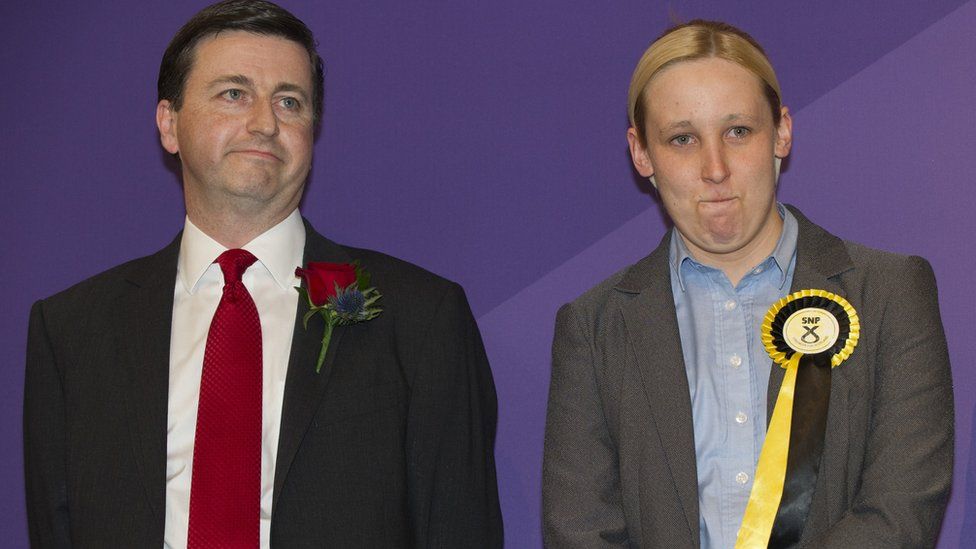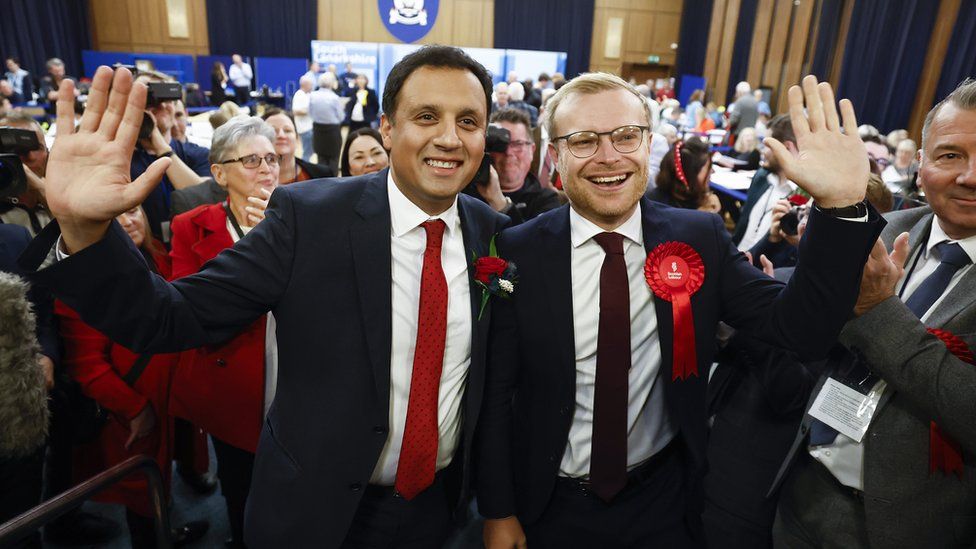General election: Why the battle for votes in Scotland is key
Politics has been a bit of a rollercoaster over the past decade. Nowhere is that more true than in Scotland.
At the 2019 general election, Labour won just one constituency, finishing fourth behind the SNP, Conservatives and Liberal Democrats.
This time, senior figures in the party think they could finish first. They’ve identified 28 Scottish seats as ‘in play’ – ones they think they could win.
If they succeed, it would be the most remarkable turnaround and could be an important factor in deciding whether Labour wins power at Westminster.
If you don’t follow Scottish politics, here’s a quick crash course: Labour was nearly wiped out in Scotland at the UK general election in 2015.
The party’s vote had been falling, but the Scottish independence referendum made it much worse.
A lot of traditional Labour voters backed independence but the party did not and so some decided to vote SNP.
Labour went from having 41 Scottish seats to just one. The SNP went from having six MPs to 56.
Speaking to me for a new BBC Radio 4 documentary, Scottish Labour Leader Anas Sarwar admits the party became complacent.
He admits there was an air of Labour feeling “untouchable”. It wasn’t.
One of the biggest results of the night was in Paisley, where 20-year-old student Mhairi Black, SNP, beat Labour’s shadow foreign secretary, Douglas Alexander.
She told the programme: “It definitely made it undeniable that something in Scotland had shifted and it had shifted dramatically.”

It’s hard to exaggerate how bad the situation was for Labour in Scotland. At times, some questioned the party’s very existence; squeezed electorally between the pro-independence SNP and the pro-union Conservatives.
So how did they get from that, to now?
The Rutherglen by-election in October 2023 was seen as a big test of whether Labour’s hopes of a revival were realistic. Labour won comfortably – and since then, senior figures have become more confident.
Labour thinks 28 of Scotland’s 57 seats are in play.

The party plans to dedicate significant funding to seats in Glasgow, chunks of Lanarkshire, several towns in Scotland’s central belt, parts of the east coast around Edinburgh, the Western Isles and more.
When I spoke to Mr Sarwar for the programme, he was sitting in front of a map of constituencies in Scotland’s central belt. Twenty five of them had been highlighted bright red. They looked suspiciously like target seats.
He said: “If you look at where we are in the polls right now, it would suggest we are competitive in that range of seats.”
What’s interesting though, is that Labour’s strategy on the independence question hasn’t really changed. In 2015, it urged voters to focus on other issues. Voters ignored that plea. But this year, Labour believes it could be working.
In fact, it seems fair to suggest the big changes in Labour’s fortunes aren’t really about Labour. They’re more to do with the SNP and the Conservatives.
The last few months have been a nightmare for the SNP. After Nicola Sturgeon resigned, there was a bruising leadership election. Ms Sturgeon was arrested in a probe over funding (then released without charge).
The party’s new leader, Humza Yousaf, has proved a lot less popular with the public. The SNP have suffered in the polls – and some of the decisions the party has taken in power at Holyrood have been criticised.
londonGBDESK//



Comments are closed.